The sales funnel isn’t linear anymore. In reality, the customer journey is complex and full of nuance.
However, despite the “tornado” sales path today, the AARRR framework still has its place.
In this guide, let’s review the basics (using Grammarly as an example) and learn how to improve your acquisition, activation, and retention using our contact scoring tool quickly.
Breadcrumbs is a revenue acceleration platform based on a co-dynamic lead scoring and routing engine living at the intersection of marketing and sales. Book a 30-minute demo with us to speed up your sales deals today.
What is the AARRR Pirate Metrics Framework?
The AARRR pirate metrics framework, developed by Dave McClure, is a group of customer behavior metrics that measures success in a company on a product-led growth business model.
AARRR is an acronym for acquisition, activation, retention, revenue, and referral.
(Side note: it’s known as the pirate metrics because AARRR sounds like the noise a pirate would make.)
Why Use the AARRR Pirate Metrics Framework?
The AARRR framework is the most straightforward tool to understand what’s happening in your sales funnel.
Whether it’s identifying a bottleneck in acquisition, activation, retention, or referral, the pirate funnel makes an excellent starting point.
Using the AARRR system, we can identify the right actions in each stage, optimize it, and ensure it stands the best possible chance of converting potential customers to loyal, long-term customers. There’s also an opportunity to explore how different demographics targeted programs, such as scholarships designed to support their specific educational and professional development needs.
How Does the AARRR Pirate Metrics Framework Work? (a Grammarly Case Study)
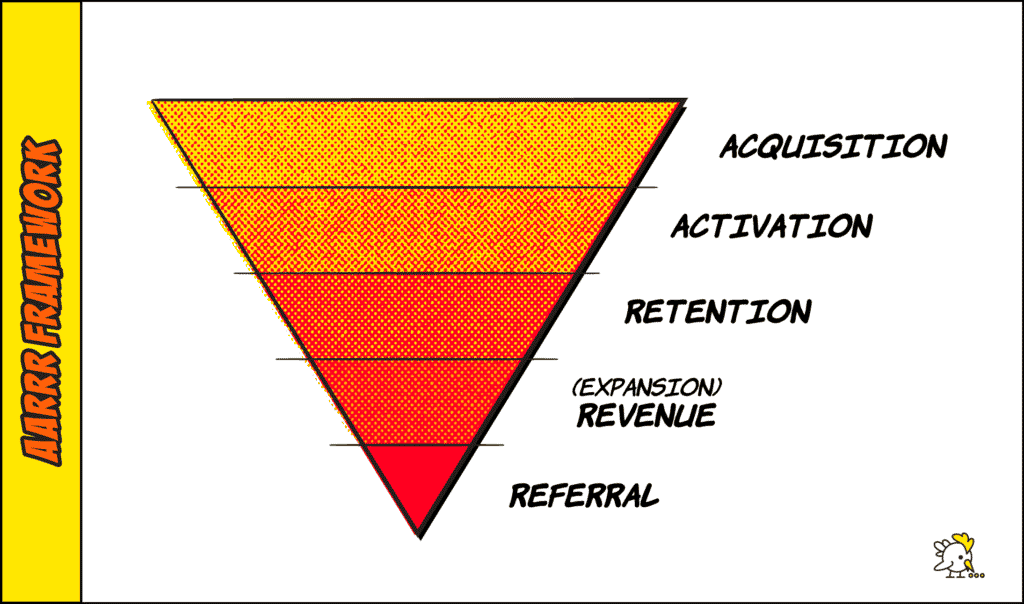
The AARRR framework is valuable for startups on a freemium revenue model (or free-to-paid model).
In this section, we’ll use Grammarly as an example to illustrate how acquisition, activation, retention, and the other AARRR pirate metrics work in the user journey map.
(Re)introduction: Grammarly is a $13B valued auto-editing software company that’s achieved exponential growth in its massive customer base.
Acquisition
Acquisition is the stage where people visit a website or product from marketing channels. Common user acquisition metrics include site traffic, number of visitors, and cost-per-click.
Content marketing plays a significant role in acquisition, as reflected in Grammarly’s marketing efforts. Note how the company specifically targets pain-point SEO keywords (e.g., “affect vs. effect).
Pain-point SEO is a strategy where you target high-intent keywords that solve customers’ problems.
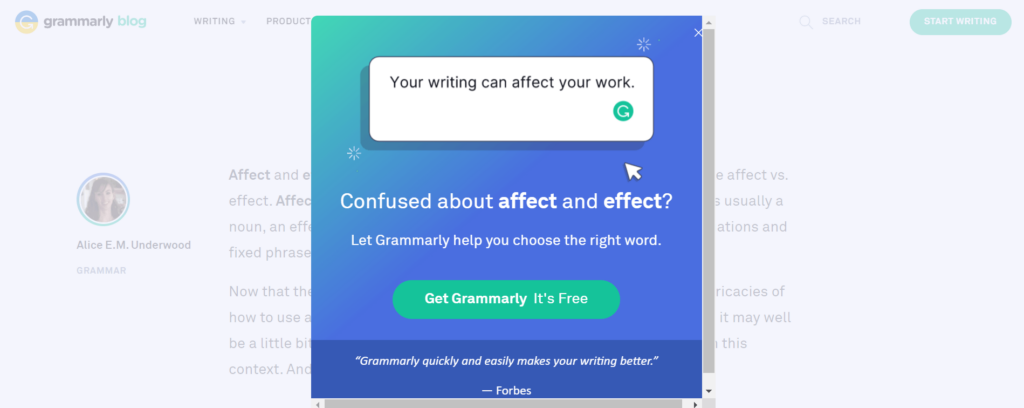
Grammarly also targets prospective customers on the following channels:
- Affiliate networks (e.g., CJ.com)
- Sponsorships
- Ads
- Free editing tool
- Social media
- Public relations (e.g., press release on PRNewswire)
If there’s one golden nugget to take away from Grammarly’s acquisition phase, it’s this: Don’t stop at a single post.
Repurpose all existing posts into other formats to attract a bigger audience. That 1,000 word-blog post you wrote after interviewing a subject expert? Turn it into a series of fun social media graphics, talk about it on a podcast, or expand it into a masterclass webinar.
Activation
Activation is the stage where visitors experience value from a product and become users (a.k.a. “aha” moment). Activation metrics include visitor-to-sign-up rate and number of conversions.
Grammarly activates users largely with its freemium tool and product emails.
Users would receive a welcome email detailing what they need to do to make the most out of the editing tool. Each time they install an app (note: Grammarly supports multiple systems, like Microsoft and Chrome), they will receive a new email with additional tips.
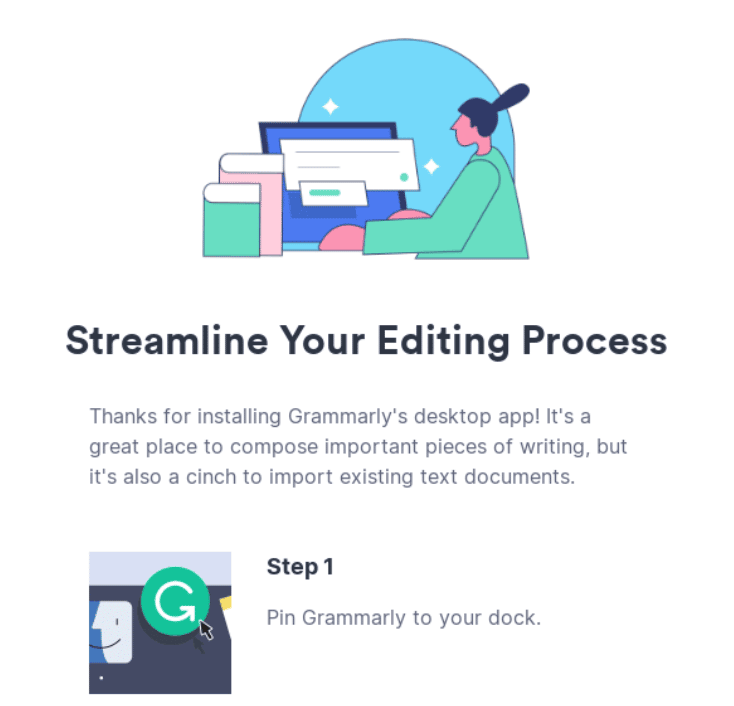
The more Grammarly educates these users, the higher the engagement, and the more value they extract from the editing tool.
Of course, there’s a lot more to improving your activation rate besides sending product emails. You also want to review the onboarding process (check your customer feedback!) to assess the user experience.
In this case, use in-app tools like Pendo to onboard users smoothly. Include contextual information within the product, motivate them with visual indicators, and send hyper-targeted emails based on how they interact with the product.
[Bonus] Adoption
(Note: Many folks use adoption loosely and interchangeably with activation. We’re including it as an individual stage.)
Adoption sits between activation and retention. It’s the stage where trial users use the product regularly. In this phase, you’ll use track metrics like trial conversion rate and feature adoption rate.
Grammarly goes all-in on its trial-to-paid-conversion emails. Note how it entices users with a sweet discount deal to unlock advanced features—hook, line, and sinker.

Here’s how you can convert active users into paying customers on Breadcrumbs:
- Connect your data sources (e.g., CRMs like HubSpot, product analytics platform like Mixpanel)
- Determine what makes a sales qualified lead (SQL) [e.g., login time period, use feature X]
- Set scoring model live
Breadcrumbs will send all scoring information back to your data source, notifying you when an active user becomes an SQL.
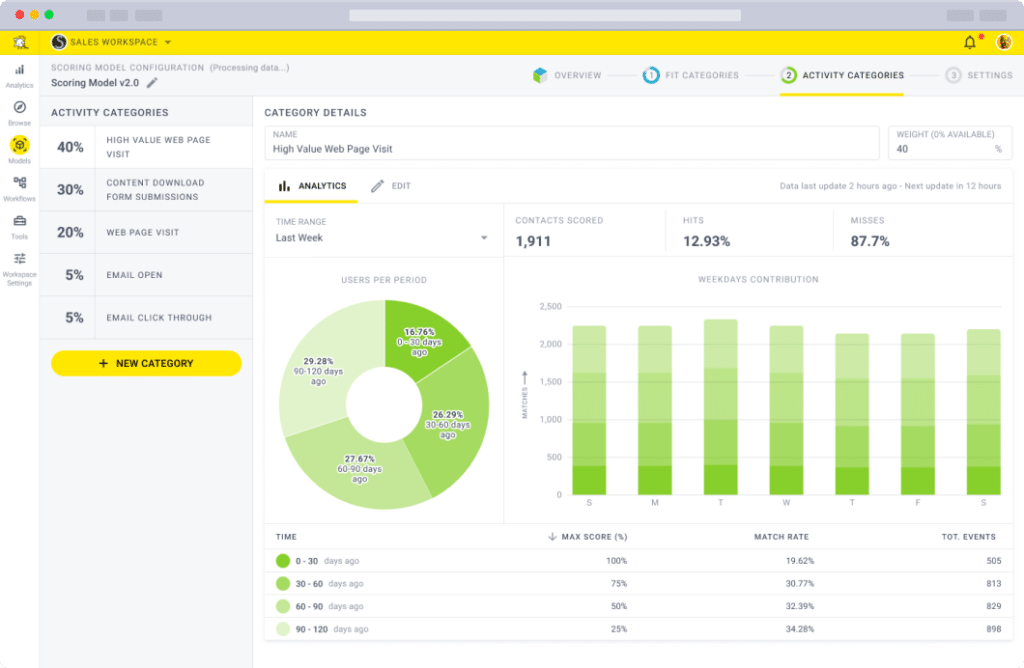
This lets you track user actions individually and gather all data to your scoring model. Book a 30-minute demo with Breadcrumbs today to close your high-value leads.
Retention
Retention is the stage where customers continue using the product and come back for more. Metrics include customer retention rates, customer lifetime value (CLTV), and customer churn.
Likewise, Grammarly is hard at work in its email marketing strategy to keep active customers. Note again how the auto-editing software company uses trends, badges, and personal records to engage customers.
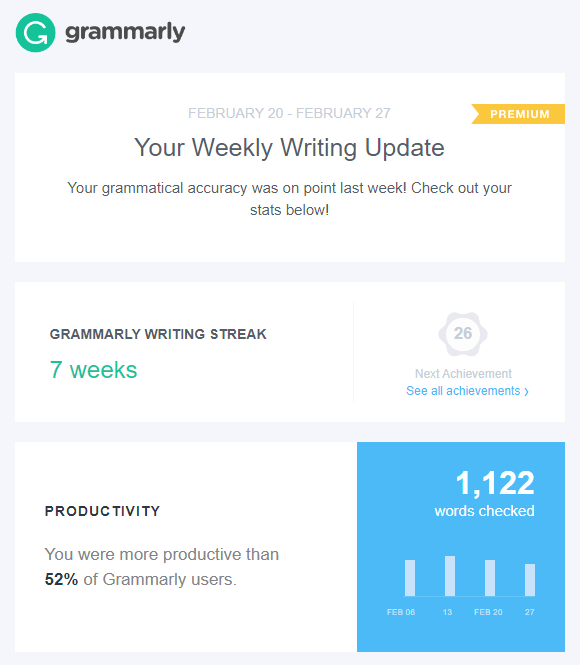
Grammarly’s badges are something else. They’re full of surprises, personality, and history trivia. The user-centric delight encourages long-term use.
Not forgetting inactive users, Grammarly also emails them to keep them from leaving.
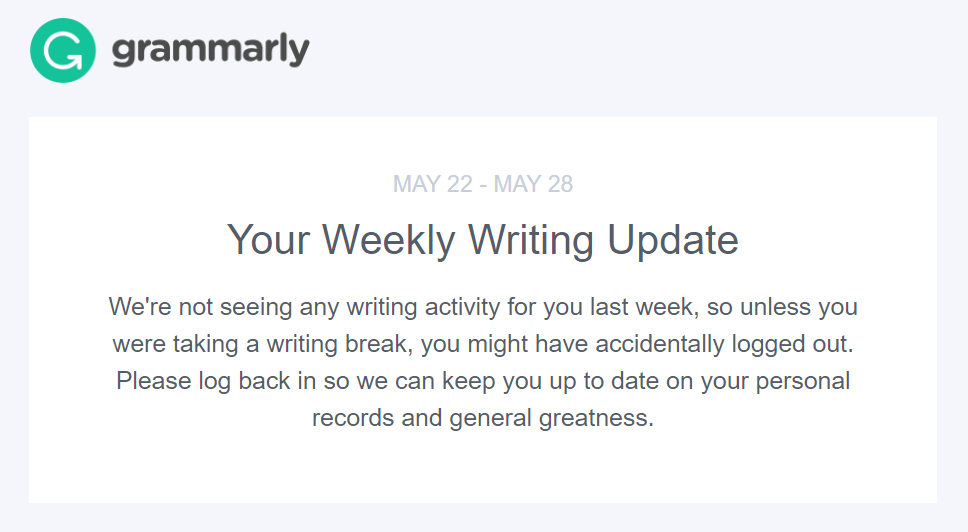
Here’s one way to replicate Grammarly’s retention email strategy. After integrating your CRM with Breadcrumbs,
- Connect your product analytics tool
- Determine what makes an at-risk customer (e.g., infrequent logins)
- Set your scoring model live
Breadcrumbs will send all scoring information back to your CRM, triggering the email to your inactive users.
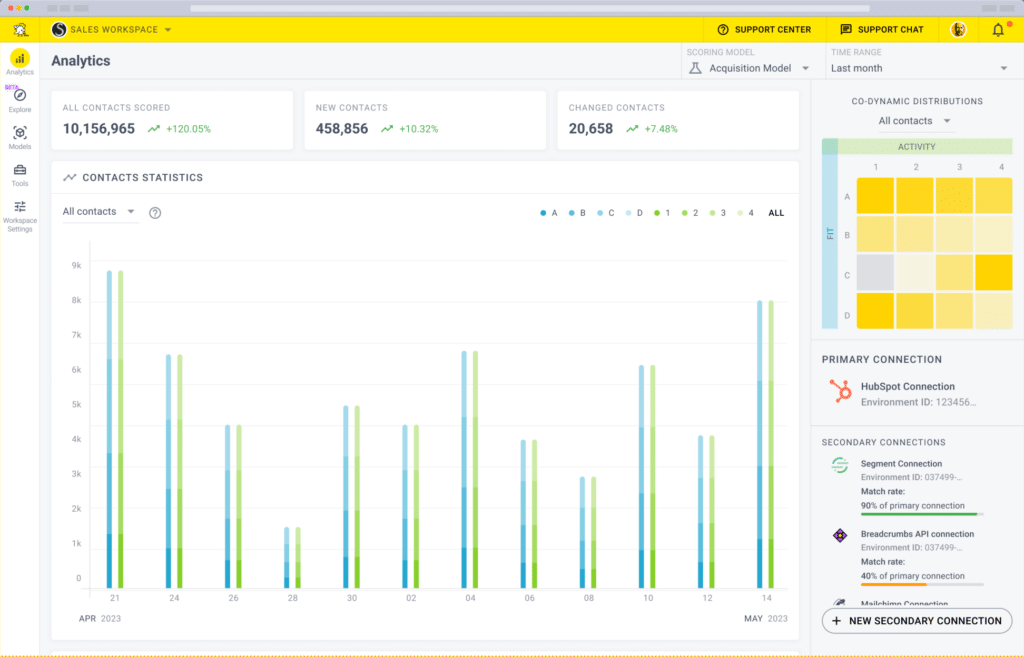
Book a 30-minute demo with Breadcrumbs today to reduce customer churn.
(Expansion) Revenue
(Expansion) revenue is the best of the best. It’s additional revenue from cross- and up-selling existing customers. At this stage, you’ll want to measure metrics like CLTV and expansion monthly recurring revenue (MRR).
Note: Grammarly doesn’t really have a cross- and upsell email given its pricing plans, so we’ll skip using it as an example in this section.
Here’s how you can use Breadcrumbs to identify customers with up- and cross-sell potential:
- Connect your CRM with Breadcrumbs
- Determine what makes a customer with cross- and up-sell potential (e.g., clicks a support doc about advanced features, visits pricing page)
- Set the scoring model live
You know the drill. Whenever customers meet the cross- or up-selling criteria, your CRM will notify you of the opportunity.
Book a 30-minute demo with Breadcrumbs today to spot cross- and upsell opportunities with zero guesswork.
And while you’re at it, analyze your entire customer data via Reveal to identify the specific attributes and actions that attract the biggest revenue.
That way, you can focus on your best customers and scale revenue growth. To get started:
- Connect your customer data with Reveal
- Choose the segment of contacts that define success (e.g., customers on specific plans)
- Reveal the results!
Breadcrumbs Reveal gathers all your marketing, sales, and product data in a single place. You’ll get a hyper-detailed look at your ideal customers like this:
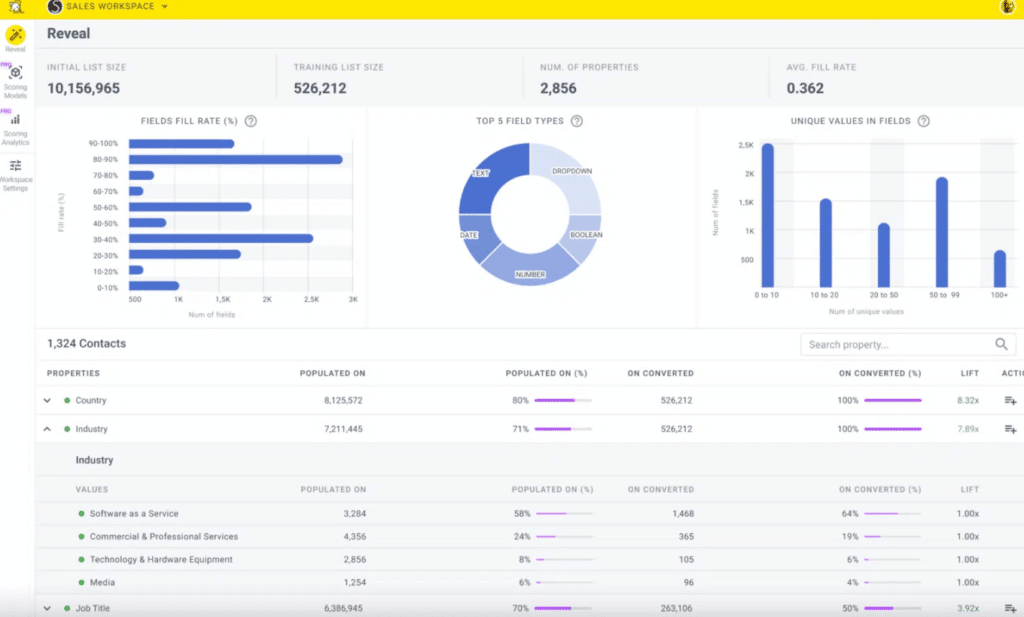
Grab your free access to Reveal for a limited time.
Referral
Referral is the last stage of the AARRR framework. It’s where customers become advocates and recommend the product to other users. Focus on customer satisfaction metrics like reviews and net promoter score (NPS).
Loyalty programs are vital in building relationships with your best customers. In fact, 57% of consumers spend more on brands to which they are loyal.
Grammarly spreads the word about its product via a simple affiliate program: place a tracking link or banner on a website and get paid when a user signs up for and installs Grammarly.

If you want to promote your product via a referral program or any other program to boost revenue acceleration, here’s how you can get started:
- Connect with data sources (i.e., CRM and in-apps platform)
- Determine what makes a loyal customer or advocate (e.g., high product engagement, on premium plan, purchase add-ons)
- Set the scoring model live
Next, set your data source to trigger an email invitation for customers who meet the criteria.
You can also compare several scoring models at a single glance. This lets you quickly assess which customer segments are the most profitable and well worth your time.
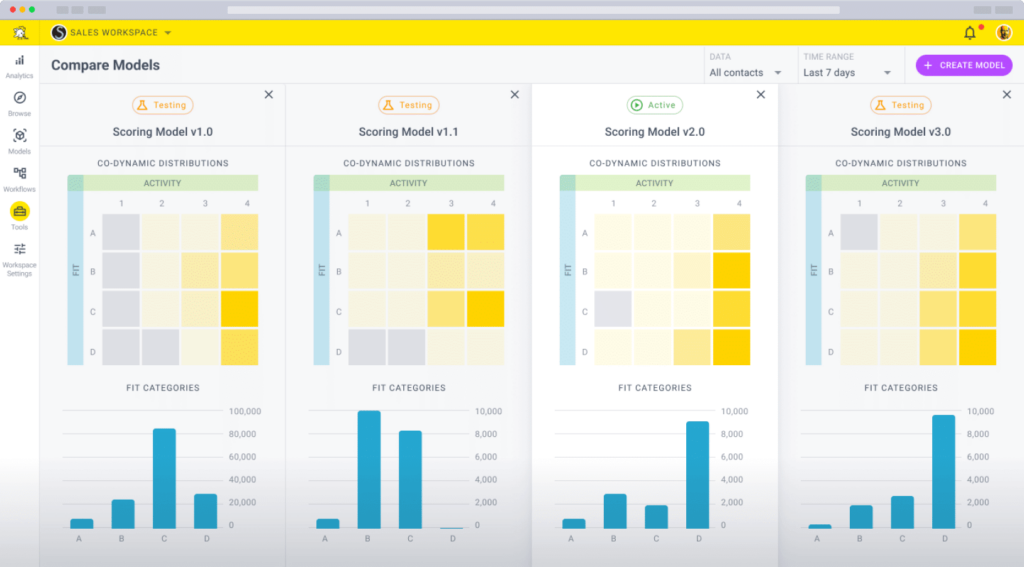
Book a 30-minute demo with Breadcrumbs today to identify your most profitable customers in a heartbeat.
AARRR Framework: The Starting Point for Acquisition, Activation, Retention & More
There’s really no linear path in the sales funnel.
Nonetheless, the AARRR framework provides a simple structure for understanding user behavior at each stage and deciding the best course of action that converts them to customers.
Breadcrumbs is a revenue acceleration platform based on a co-dynamic lead scoring and routing engine living at the intersection of marketing and sales. Book a 30-minute value-packed demo with us to scale your revenue growth today.



